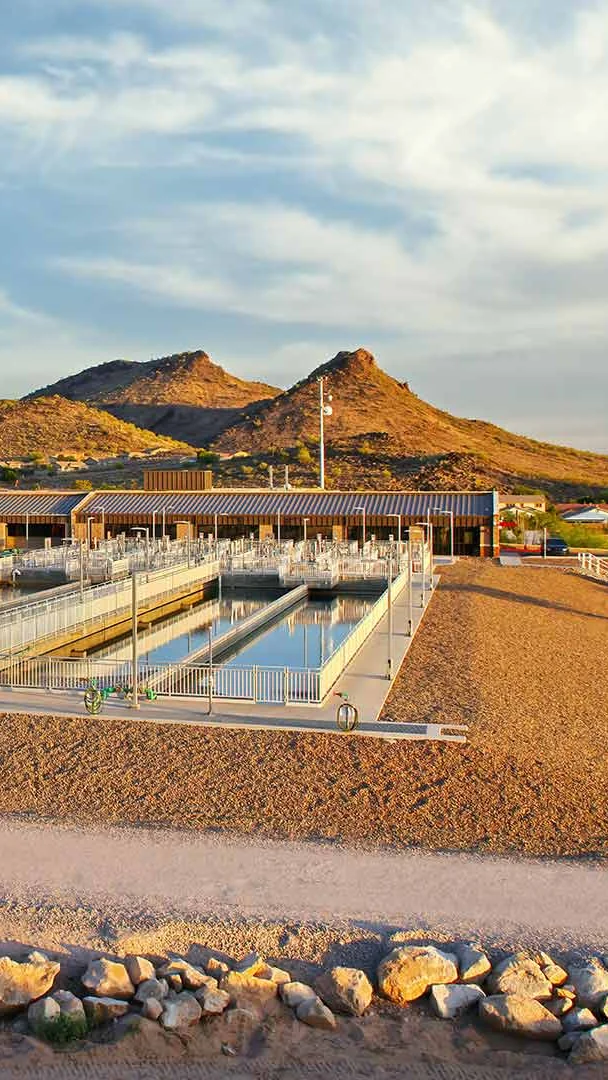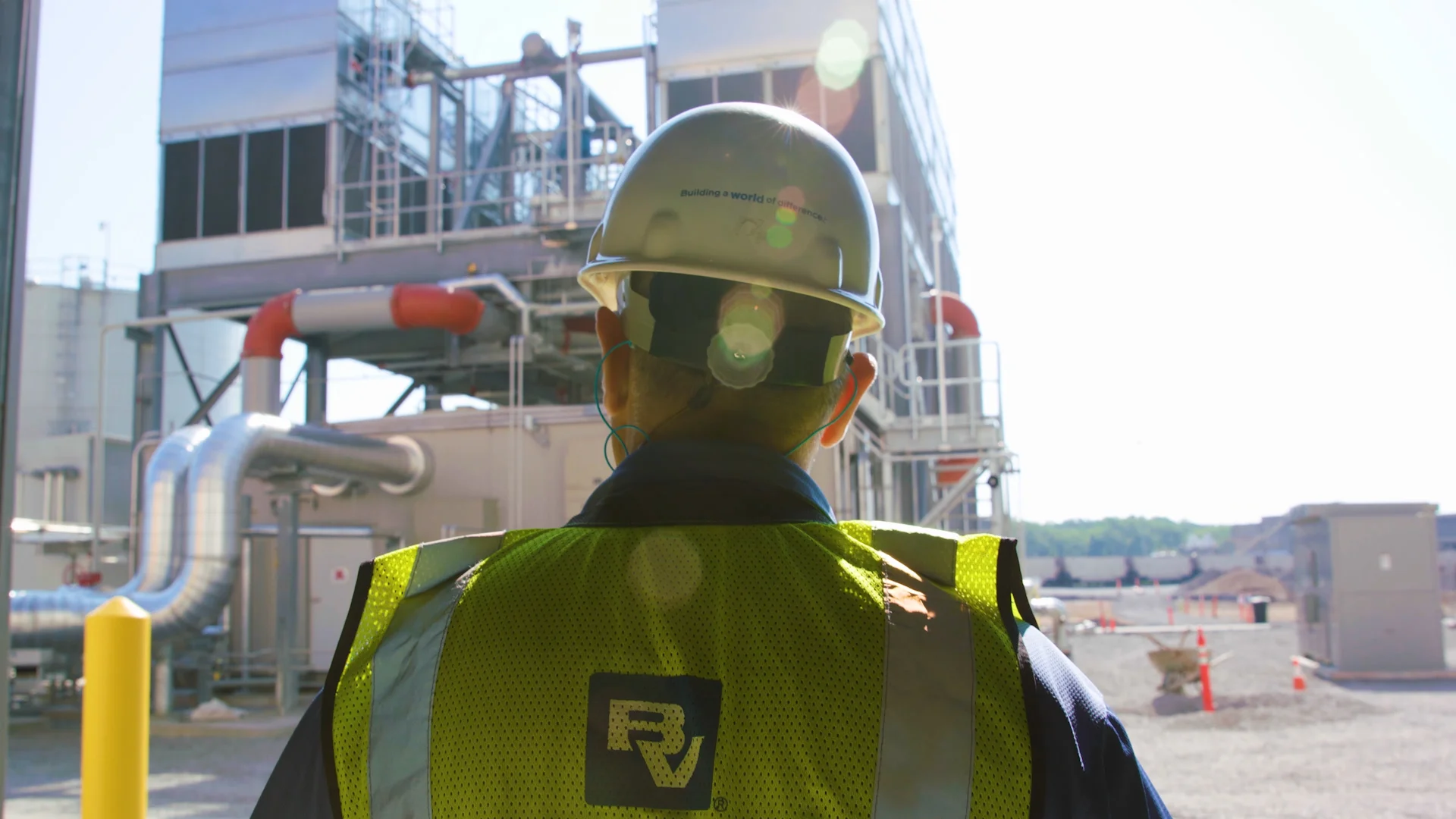Upgrade, Boost Treatment Capacity While Staying Online, on Time and on Budget

- Project Name
- Pyramid Peak Water Treatment Plant Expansion Project
- Location
- Glendale, AZ
- Client
- City of Glendale, AZ
Resilience was the central challenge and key result of the upgrade to the Pyramid Peak Water Treatment Plant.
The plant serves the Arizona cities of Glendale and Peoria in the growing West Valley area of Phoenix. In 2017, the cities, as co-owners, decided following studies and assessments that improvements were needed to replace and upgrade critical yet aging equipment at the plant. Additionally, Peoria determined that an expansion to treat more of its Colorado River water allocation would be more cost-effective than building and operating a new treatment plant on a greenfield site.
Black & Veatch was selected as the design engineer. Having supported prior expansions at the plant in 1999 and 2005, BV had knowledge that set a solid foundation for the project. With McCarthy Building Companies serving as the project’s Construction-Manager-at-Risk (CMAR) contractor, the project team worked alongside the cities and plant operators to deliver the project on time, on budget and keep the water flowing throughout the project and for long into the future.
Behind the Improvements: Productivity, Efficiency, Safety and Savings
Increasing treatment capacity by 15 million gallons per day (MGD), the project added a new water treatment train – the plant’s fourth. Computational flow dynamic modeling was used to identify the best configuration for a passive flow split to each of the treatment trains and to set up the hydraulics for future expansion. Modeling was also used to evaluate mixing downstream of the primary disinfection point and the best place for sampling a representative solution. Altogether, it enabled the design team to optimize disinfection, reduce disinfectant byproducts in the finished water, and lower costs.
The project further added an additional backwash recovery basin plus two new lagoons, increasing the plant’s capacity to process return water and further optimizing treatment operations. Meanwhile, maintaining gravity flow through the water treatment plant keeps the plant’s energy use low per gallon treated. A new, more efficient laboratory HVAC system reduced the plant’s energy costs while providing a more worker- and equipment-friendly environment. Replacing the plant’s aging electrical distribution system also increased worker safety and plant reliability.
ㅤ
Behind the Design: Planning, Innovation, Flexibility
The project’s most complex challenge involved the expansion and replacement of the plant’s major power supply and process systems. Examples of how the team kept the water flowing throughout construction included the following:
Shutdowns were limited to 12 hours during low-demand periods, with water stored in reservoirs on site to meet the cities’ 24/7 supply needs.
The project essentially replaced and upgraded the plant’s power distribution system. The new system was built and commissioned in a new location then the changeover was made in phases to keep the plant online.
Connecting the new 15 MGD expansion to the existing treatment plant involved the installation of a 54-inch filtered-water collection pipe. The connection point for the old to new pipe was 18 feet below ground. To stay on schedule and start the filter basin construction first, the team needed to get the filtered-water pipeline into the ground below the new filter gallery. It was thought initially that a new, 54-inch valve would be needed at the connection point. Instead, the 54-inch line was ordered early, with the individual filter effluent pipe and isolation valves in a prepurchase package. As a result, the deep pipe was installed, pressure-tested, and disinfected, and the connection was made at the beginning of the project. In short, the solution eliminated the need for an expensive valve in a difficult-to-maintain location.
The design provided chemical feed-pipe interconnection flexibility and added redundant metering pumps. The additions enabled the replacement of 24 chemical metering pumps while maintaining chemical flow to feed points with a swing standby and control modifications. This could not have been done safely without the owners having the programming ready for the new pumps as they came online, or without the willingness of the owners to operate the system with both old and new equipment online during the transition period.
ㅤ
Behind the Delivery: Responsiveness, Collaboration, Ownership
A hallmark of the project was its culture of collective ownership. A notable example: Prior to the startup and commissioning of the new treatment train, issues at the existing trains caused several filters to have to be placed offline. These issues impacted the production of water at the plant. After further investigation, it was clear that the filters in Trains 1-3 needed to be replaced. With this discovery and thanks to being ahead of schedule, the project team adjusted quickly and completed the new train two months early. The early startup and commissioning provided the flexibility to phase the filter replacement in the existing trains so as not to impact the water demands in both communities. Additionally, the design provided enhanced access to the existing backwash channel, to meet the owners’ preference for using divers for operations and maintenance work within the treatment trains.
Increased redundancy and capacity coupled with the team’s exemplary delivery significantly improved the reliability and resilience of the plant and water system for Glendale and Peoria.
“The cities, plant operators, design engineer and CMAR collaborated seamlessly from planning through construction to achieve the project’s goals, budget and schedule. Everyone took ownership. The dedication to teamwork and flexibility among all stakeholders led to value engineering, streamlined workflow for optimum procurement and construction windows, and advanced planning. Cost-savings were applied to more improvements, including replacing filter underdrains and modernizing the plant’s control room.”
Craig Johnson, Director of Water Services (retired), City of Glendale
Contact Us
Looking for a partner in innovation?
Let's Talk
